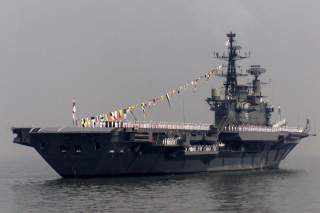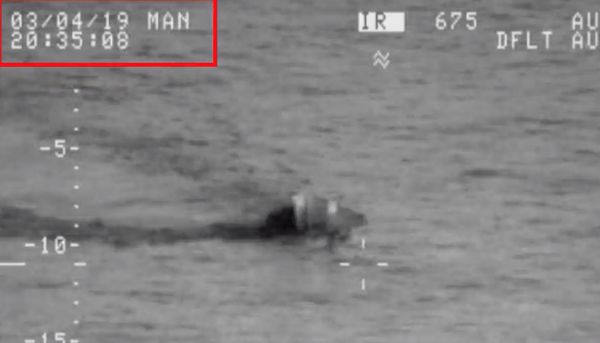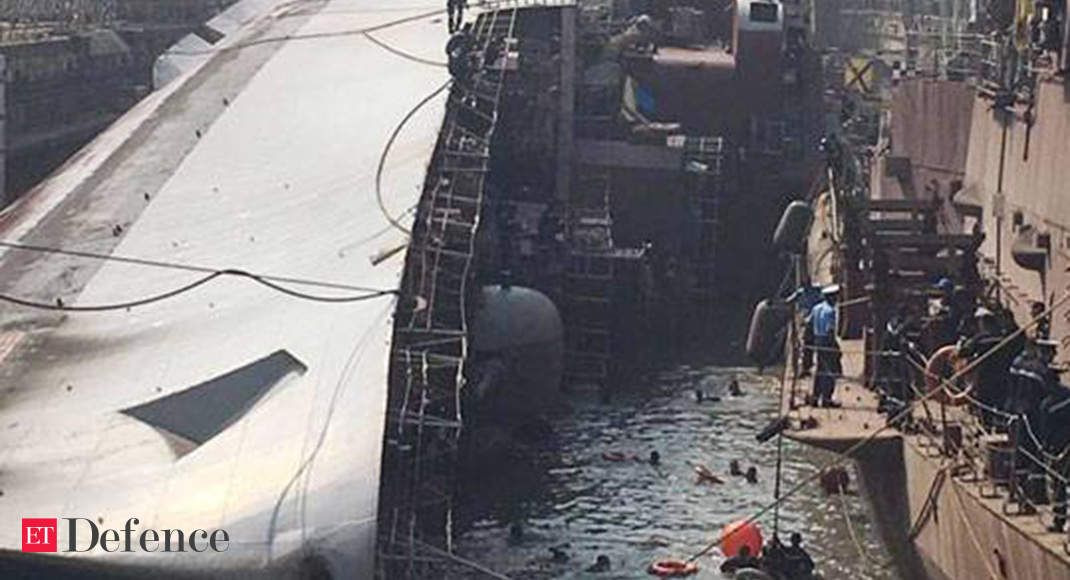space cadet
SENIOR MEMBER
 SUBSCRIBE
SUBSCRIBE
Rising Power: India Is Building More Aircraft Carriers
Watch out, China.
by Robert Farley Follow drfarls on TwitterL
Key point: Carriers are costly and difficult to build well. However, New Delhi is up for the task as India seeks to be a truly great power.
With one large carrier in service and another on the way, India has become one of the world’s pre-eminent naval aviation powers. How did the program come about? Where is it going? And what is the strategic rationale for India’s massive investment in aircraft carriers?
The Origins of India’s Carriers
Despite considerable economic challenges, India took carrier aviation very seriously in the years after independence. Unlike China (or even the Soviet Union), India focused on carriers instead of submarines. INS Vikrant, a Majestic-class light carrier, served from 1961 until 1997, fighting effectively in the 1971 war. INS Viraat, formerly the Centaur-class carrier HMS Hermes, joined the Indian Navy in 1987 and served until 2016. These carriers gave the Indian Navy long-term experience in carrier ops, as well as a compelling organizational logic for maintaining a carrier capability.
The Current Situation
By the early 2000s, Viraat was showing her age. The supply of second-hand carriers, long dominated by the Royal Navy’s World War II relics, had narrowed considerably. Instead of building a new ship itself, India determined to acquire an older Soviet carrier, the former Kiev-class warship Admiral Gorshkov, which had been out of service since the 1990s. India paid in excess of $2 billion for a massive reconstruction that left the ship nearly unrecognizable, with a ski-jump deck and transformed weapon systems. When accepted into service in 2014, the new 45,000-ton INS Vikramaditya could operate around twenty MiG-29K fighters, along with utility helicopters. Despite cost-overruns and serviceability problems, the ship offered the Indian Navy the chance to redevelop its aviation muscles after years of operating only VSTOL (vertical and/or short take-off and landing) aircraft from Viraat.
Vikramaditya was only the first step towards recapitalizing the aviation wing of the Indian Navy. The second step was the new INS Vikrant, a 40,000-ton ski-jump carrier built in India’s Cochin Shipyard. Laid down in 2009, Vikrant is expected to finally enter service around 2020, with an air wing similar to that of Vikramaditya. The construction process has witnessed a number of setbacks, many of which are to be expected from a first effort at carrier construction.
For the time being, India has decided to stick with the MiG-29K as its primary naval combat aircraft, rather than the Su-33, the F/A-18 or the Dassault Rafale. Both Boeing and Dassault remain at least somewhat hopeful of exporting carrier-borne fighters to India. Even Saab expressed an interest in converting the Gripen for naval service. The Indian Navy also contemplated developing a navalized version of the HAL Tejas, but (for now) has wisely rejected the complicated effort to convert the troubled fighter.
Strategic Rationale
India’s carrier force has developed a three-pronged rationale for its purpose. The first prong is support of a conventional war against Pakistan, which would involve strikes against Pakistani naval assets and land bases. Unfortunately, Vikrant and Vikramadityawould struggle in strike operations because of limitations on aircraft weight, although they certainly would attract Pakistani attention. Second, the carriers make the Indian Navy the preeminent force in the Indian Ocean, better able to command the area than any foreign competitor. Indian carriers will always have better access to bases and support facilities in the Indian Ocean than China, the United Kingdom, or even the United States, and the presence of the carriers facilitates the projection of Indian power and the management of trade protection.
The third prong involves geopolitical competition with China. With the anticipated commissioning of its second large carrier, China has managed to leapfrog Indian naval aviation development in a relatively short period of time. Although China lacks India’s experience with carriers, it boasts a remarkably efficient shipbuilding industry and an increasingly sophisticated aviation sector, making it less dependent on foreign technology. Although India may struggle to keep up with Chinese construction, it can leverage geography (proximity to bases) to its advantage in the most likely areas of any conflict.
What to Expect from the Indian Navy
The next step in India’s naval aviation project will be INS Vishaal, a 65,000-ton conventionally propelled, domestically produced CATOBAR (Catapult Assisted Take-Off But Arrested Recovery) carrier. With experience gleaned from the experience with Vikrant, the design and construction of the carrier will hopefully go more smoothly. It appears as if India will have unprecedented access to U.S. technology for the construction of Vishaal, including the EMALS electromagnetic catapult system used on the Gerald R. Ford class. Unlike Vikrant or Vikramaditya, Vishaal will be able to launch and recover heavy strike aircraft, as well as early warning planes such as the E-2 Hawkeye. Vishaal is supposed to enter service by 2030, although that timeline may be optimistic.
More recently, a spate of rumors has suggested that India might try to acquire one of the variants of the F-35 Joint Strike Fighter. Deciding to buy the F-35 (and then going through with it) would deeply tax India’s military procurement bureaucracy, however, and would require a great deal of forbearance from U.S. export control officials. Still, the F-35C is the world’s most modern carrier fighter, and INS Vishaal could surely operate the plane.
Next Steps
By the early 2030s, India plans to have three active carriers. At that point, the next presumed step will be to replace INS Vikramaditya; although lightly used, her hull is already thirty years old, and she will be less capable than the other two ships. If Vishaal is at all acceptable, India’s best bet would be simply to build more of that design, which would allow the capture of construction efficiencies will also enabling incremental improvements. Although the Indian Navy has toyed with the idea of nuclear propulsion, it really doesn’t need a nuclear carrier; the strategic tasks of the navy should keep it relatively close to home, and building nuclear propulsion into the design would result in three different carriers with three different designs, limiting efficiency and co-operability.
Conclusion
India has committed to carrier aviation, and has the resources and experience to develop a successful force. However, India still faces some big decisions, including the choice of a new carrier fighter and the design characteristics of its flagship class of fleet carriers. Much will depend on how successfully India masters the difficulties of large-scale shipbuilding, and how well it integrates new technologies into the design and construction process.




